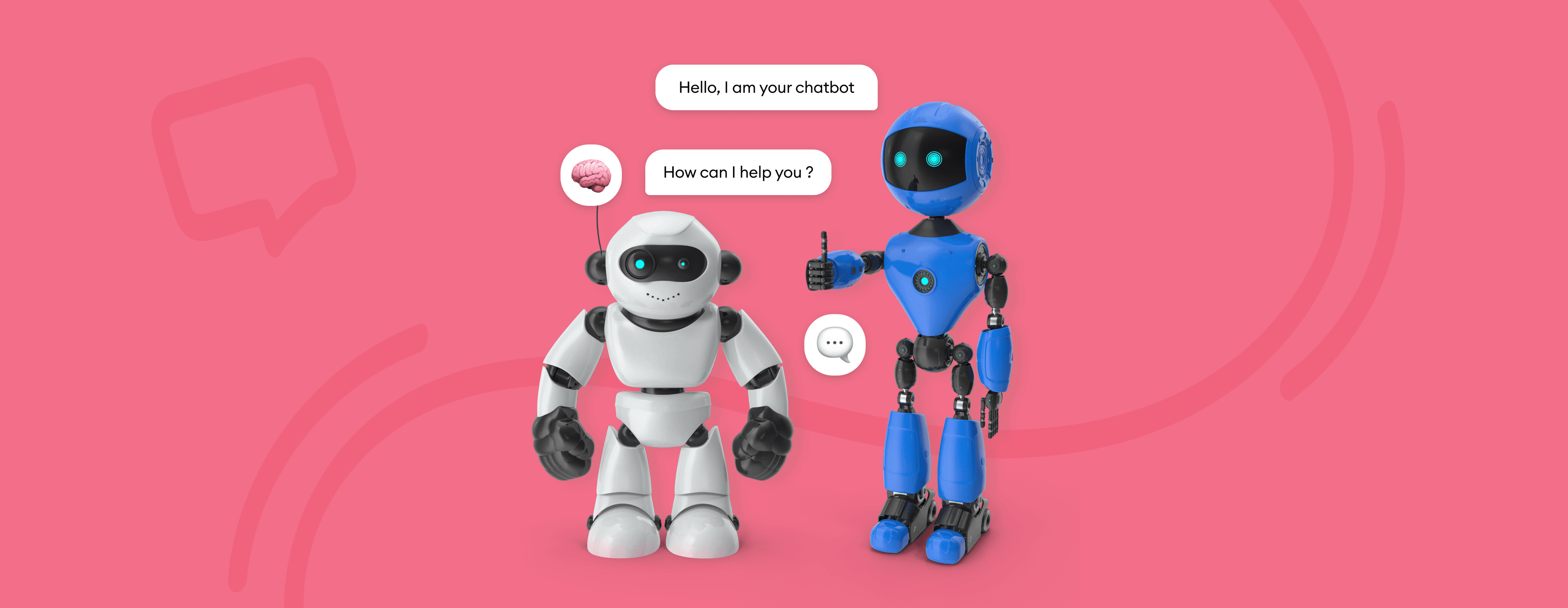Conversational interfaces can improve customer satisfaction and boost client engagement. They can handle online customer service, real-time social sales, marketing automation—you name it!
No wonder businesses adopt AI chatbot solutions so eagerly.
But—
There are so many different buzzwords! Let’s take chatbots vs. conversational AI for example. Is there any difference between them? Or are they the same thing?
It can make your head spin just trying to evaluate your options, let alone actually build something.
Don’t worry. We are here to help you figure it all out.
In this article:
- Chatbot vs. conversational AI comparison
- What is conversational AI
- Examples of AI platforms
- What is a chatbot
- Examples of bot software
- How to create a conversational chatbot
Use the best conversational AI to manage customer interactions
If you are interested in AI solutions designed for specific platforms, you can also read the following guides:
- Facebook Messenger Chatbots Explained
- The Ultimate Guide to WordPress Chatbots
- Best Shopify Chatbots Ranked & Reviewed
Straight to the point—
Conversational AI vs. chatbots
A chatbot is a software that simulates a human-like interaction when engaging customers in a conversation, whereas conversational AI is a broader technology that enables computers to simulate conversations, including chatbots and virtual assistants. Essentially, the key difference is the complexity of operations.
Chatbots operate according to the predefined conversation flows or use artificial intelligence to identify user intent and provide appropriate answers. On the other hand, conversational AI uses machine learning, collects data to learn from, and utilizes natural language processing (NLP) to recognize input and facilitate a more personalized conversation.
So—
The difference between a chatbot and conversational AI is a bit like asking what is the difference between a pickup truck and automotive engineering. Pickup trucks are a specific type of vehicle while automotive engineering refers to the study and application of all types of vehicles.
In a similar fashion, you could say that artificial intelligence chatbots are an example of the practical application of conversational AI.
Here’s a quick comparison table to make matters clearer:
| Chatbot | Conversational AI |
|---|---|
| A piece of software that simulates human-like conversations and interactions. It can be powered by AI or not. Example: – Tidio is a chatbot platform for creating AI bots without coding A chatbot is great for engaging visitors on a website | A general expression that can mean technologies, solutions, or specific engines that use artificial intelligence to simulate conversations. Example: – Lyro is a conversational AI for customer experience Conversational AI can help you create more natural and lifelike conversations |
As you can see, there is a big overlap. Essentially, chatbots are conversational AI interfaces put into action. And these technologies are becoming more and more advanced and beneficial. In fact, about one in four companies is planning to implement their own AI agent in the foreseeable future.
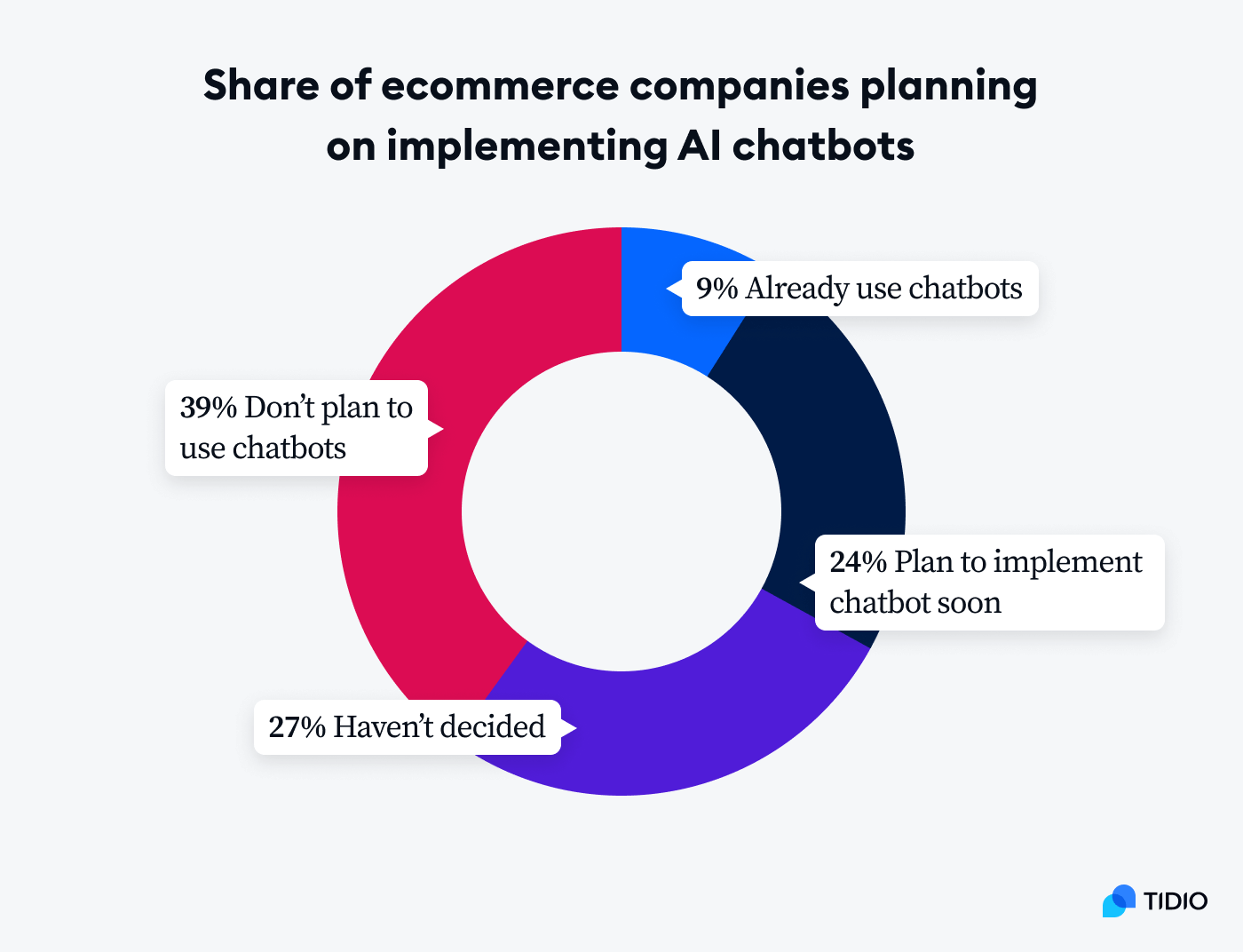
According to a report by Accenture, as many as 77% of businesses believe after-sales and customer service are the most important areas that will be affected by virtual artificial intelligence assistants. These new smart agents make connecting with clients cheaper and less resource-intensive. As a result, these solutions are revolutionizing the way that companies interact with their customers.
Read more: Discover Tidio AI features and learn how they can help your business. Also, check out this study on ChatGPT to find out what society thinks about AI-powered bots.
Let’s take a closer look at both technologies to understand what exactly we are talking about.
What is conversational AI?
Conversational AI is a good catch-all term. As we mentioned before, some of the types of conversational AI include systems used in chatbots, voice assistants, and conversational apps.
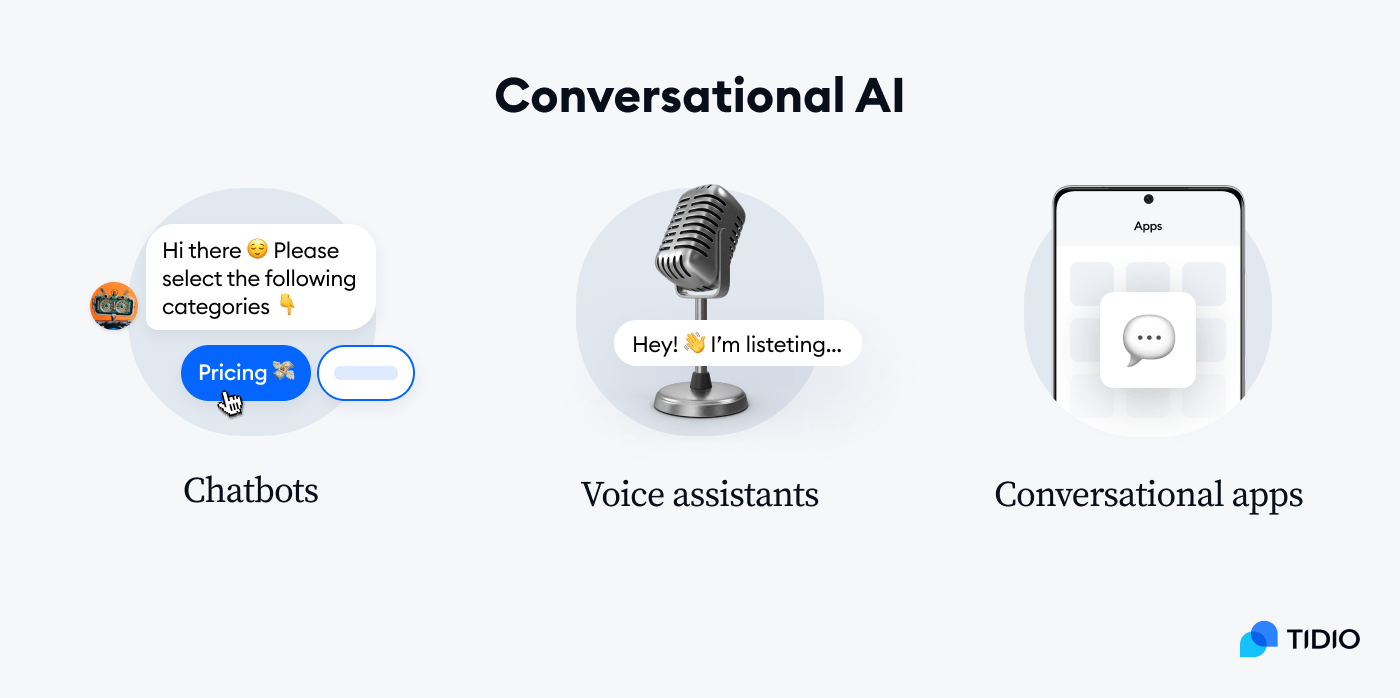
At their core, these systems are powered by natural language processing (NLP), which is the ability of a computer to understand human language. NLP is a field of AI that is growing rapidly, and chatbots and voice assistants are two of its most visible applications.
So, what is the key differentiator of conversational AI?
While a traditional chatbot is just parroting back pre-determined responses, an AI system can actually understand the context of the conversation and respond in a more natural way. The natural language processing functionalities of artificial intelligence engines allow them to understand human emotions and intents better, giving them the ability to hold more complex conversations.
For example, conversational AI technology understands whether it’s dealing with customers who are excited about a product or angry customers who expect an apology.
This solves the worry that bots cannot yet adequately understand human input which about 47% of business executives are concerned about when implementing bots.
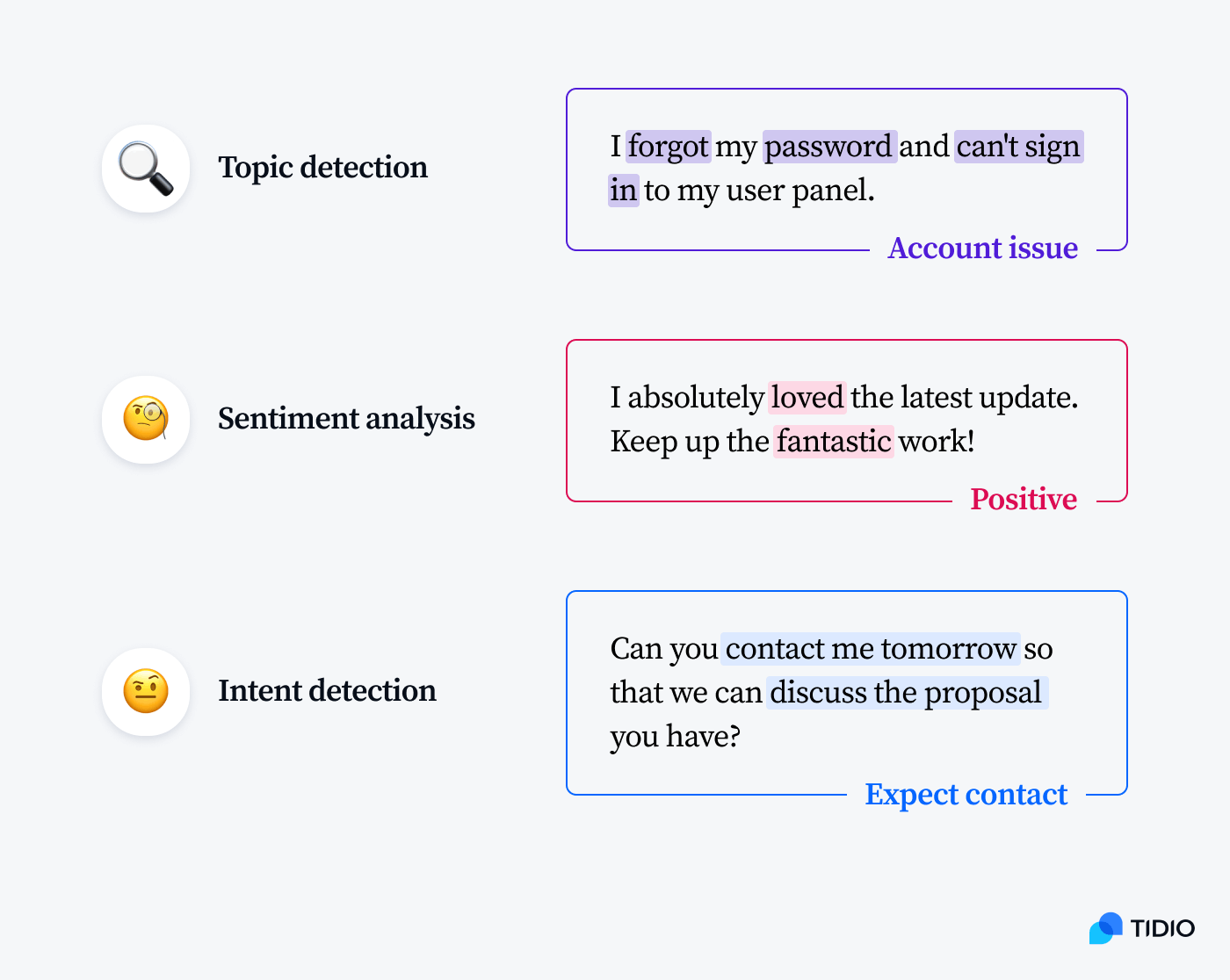
AI can also use intent analysis to determine the purpose or goal of messages. For example, if someone writes “I’m looking for a new laptop,” they probably have the intent of buying a laptop. But if someone writes “I just bought a new laptop, and it doesn’t work” they probably have the user intent of seeking customer support.
This solution is becoming more and more sophisticated which means that, in the future, AI will be able to fully take over customer service conversations. Implementing AI technology in call centers or customer support departments can be very beneficial. This would free up business owners to deal with more complicated issues while the AI handles customer and user interactions.
To get a better understanding of what conversational AI technology is, let’s have a look at some examples.
Read more: Discover essential AI trends and see if AI has the potential to take your job.
What is an example of conversational AI?
There are hundreds if not thousands of conversational AI applications out there. And you’re probably using quite a few in your everyday life without realizing it. So, let’s see how they look to spot them more easily in real life.
Here are two examples of conversational AI platforms:
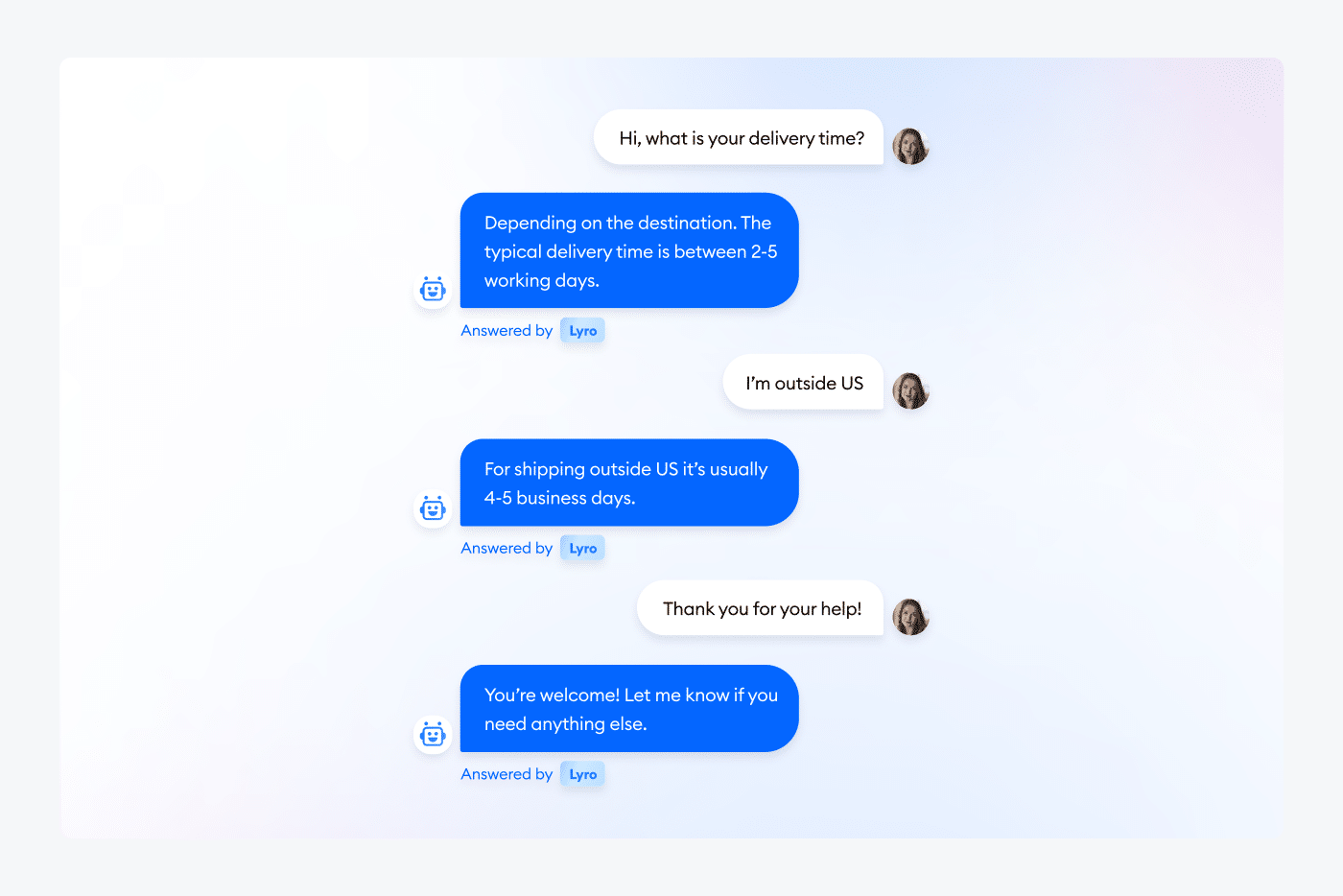
The biggest of this system’s use cases is AI customer service and sales assistance. You can spot this conversation AI technology on an ecommerce website providing assistance to visitors and upselling the company’s products. And if you have your own store, this software is easy to use and learns by itself, so you can implement it and get it to work for you in no time.
Provide frictionless customer experiences with conversational AI
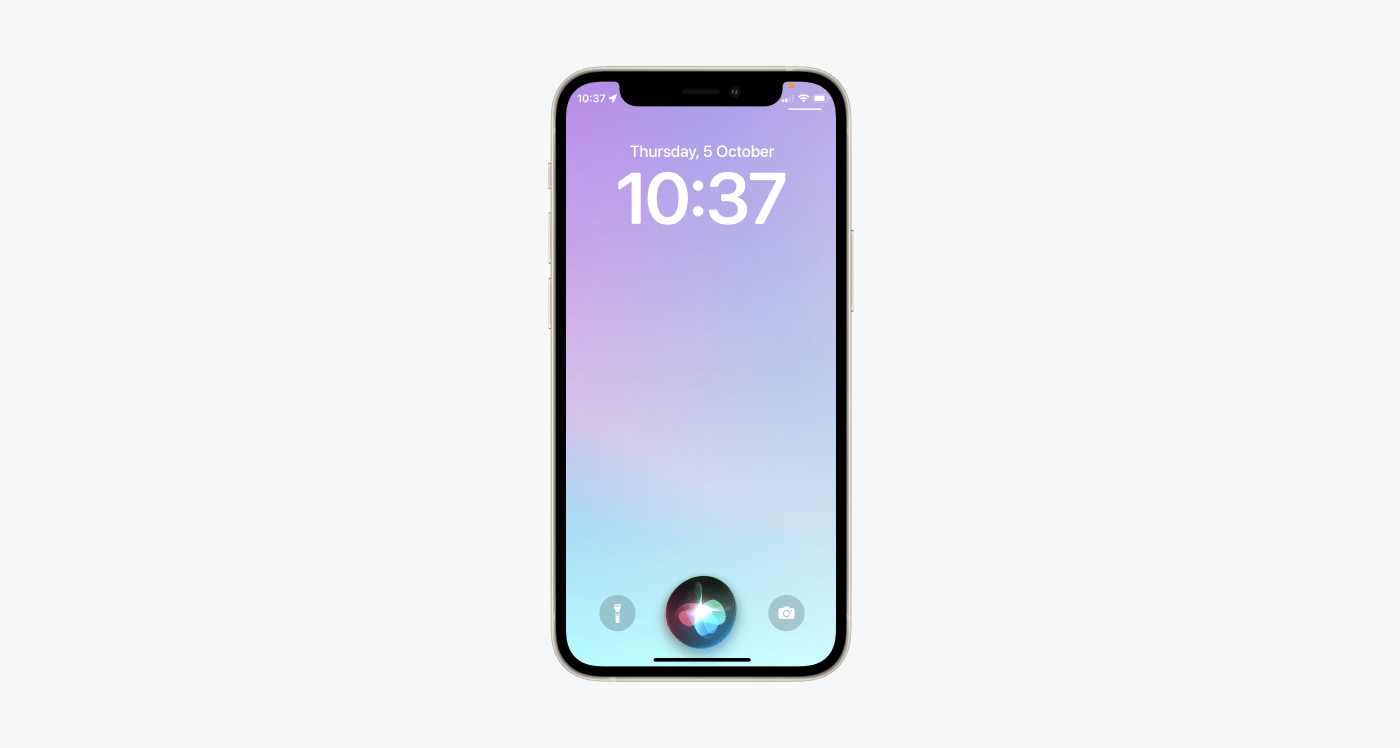
Siri provides a great user experience for people with Apple devices. It can give you directions, phone one of your contacts, play your favorite song, and much more. This system recognizes the intent of the query and performs numerous different tasks based on the command that it receives.
So, in turn, what’s a conversational chatbot?
What is a chatbot?
A conversational chatbot is a computer program that is designed to simulate a conversation with a user. Bots are meant to engage with people in order to answer their questions or perform certain tasks. But, are chatbots considered AI?
Well—yes. But it also depends on which type you’re referring to.
There are two main types of chatbots out there: rule-based bots and AI bots.
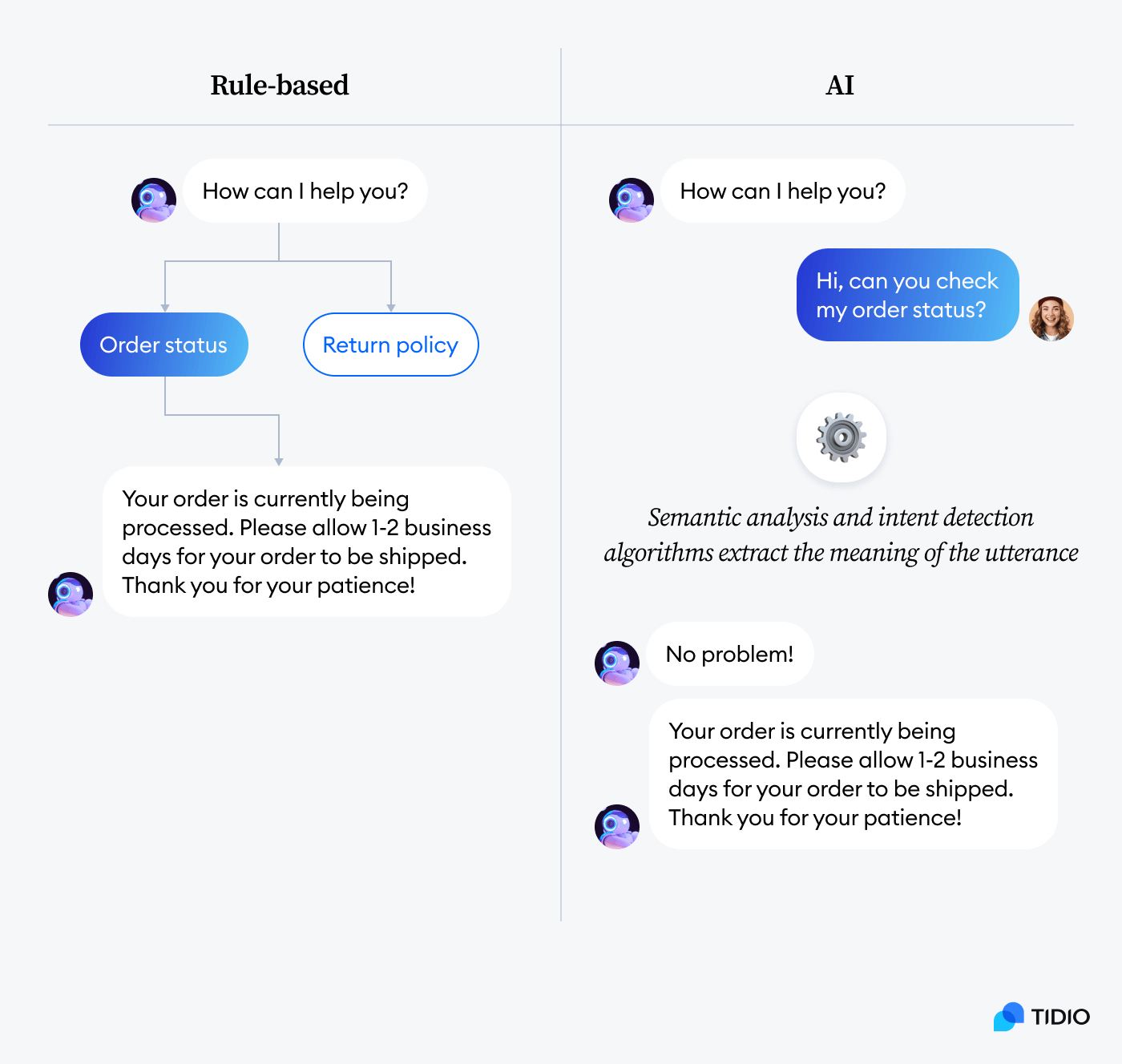
Rule-based chatbots (otherwise known as text-based or basic chatbots) follow a set of rules in order to respond to a user’s input. Under the hood, a rule-based chatbot uses a simple decision tree to support customers. This means that specific user queries have fixed answers and the messages will often be looped.
AI-based chatbots, on the other hand, use artificial intelligence and natural language understanding (NLU) algorithms to interpret the user’s input and generate a response. They can recognize the meaning of human utterances and natural language to generate new messages dynamically. This makes chatbots powered by artificial intelligence much more flexible than rule-based chatbots.
From real estate chatbots to healthcare bots, these apps are being implemented in a variety of industries. Conversational bots can provide information about a product or service, schedule appointments, or book reservations. While virtual agents cannot fully replace human agents, they can support businesses in maintaining a good overall customer experience at scale. In fact, by 2028, the global digital chatbot market is expected to reach over 100 billion U.S. dollars.
Read more: Learn how to recreate in-store experience with the help of chatbots.
Okay—
Now onto some practical examples of these virtual assistants.
Examples of a chatbot
Intelligent bots are available on many companies’ websites, social media profiles, and communication platforms like WhatsApp or Slack. How to spot when you’re talking to a chatbot? Here are two examples of AI chatbots available on the market:
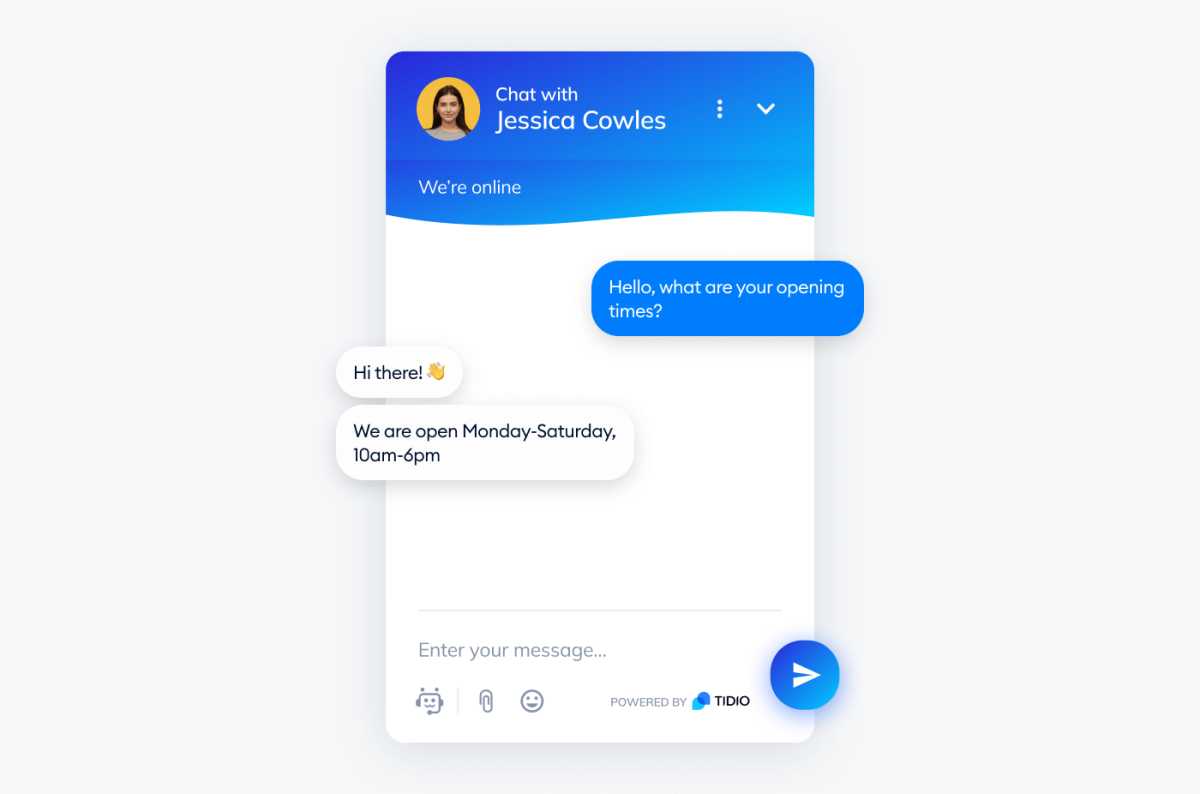
This bot enables omnichannel customer service with a variety of integrations and tools. The system welcomes store visitors, answers FAQ questions, provides support to customers, and recommends products for users. Companies use this software to streamline workflows and increase the efficiency of teams.
Read more: Learn how Shockbyte decreased the waiting time and improved customer satisfaction using Tidio chatbots.
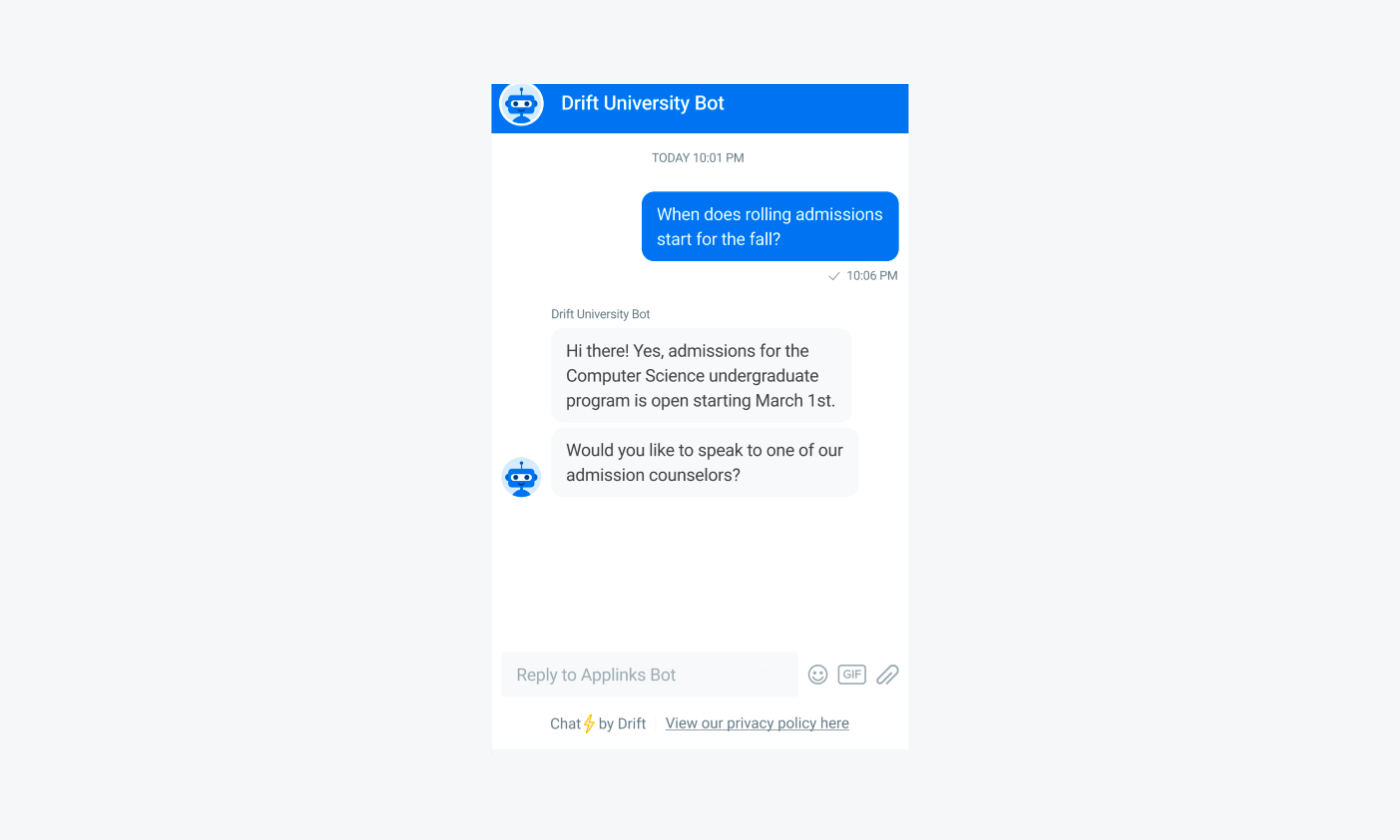
Drift provides conversational experiences to users of your business website. The chatbot helps companies to provide personalized service for customers with live chat, chatbots, and email marketing solutions. This system also lets you collect shoppers’ data to connect with the target audience better.
Now—
Read more: Discover the main differences between chatbots and live chat.
How to create a conversational bot?
Some business owners and developers think that conversational AI chatbots are costly and hard to develop. And it’s true that building a conversational artificial intelligence chatbot requires a significant investment of time and resources. You need a team of experienced developers with knowledge of chatbot frameworks and machine learning to train the AI engine. The development process of AI applications is also much longer.
However, you can find many online services that allow you to quickly create a chatbot without any coding experience.
In fact, let’s do it right now.
You are going to be surprised at how easy building your own AI agent is.
Step 1: Create your free account
To get started, go to Tidio’s register page and create a free account. There are many signup options available. You can sign up with your email address, your Facebook, Wix, or Shopify profile. Follow the steps in the registration tour to set up your website chat widget or connect social media accounts.
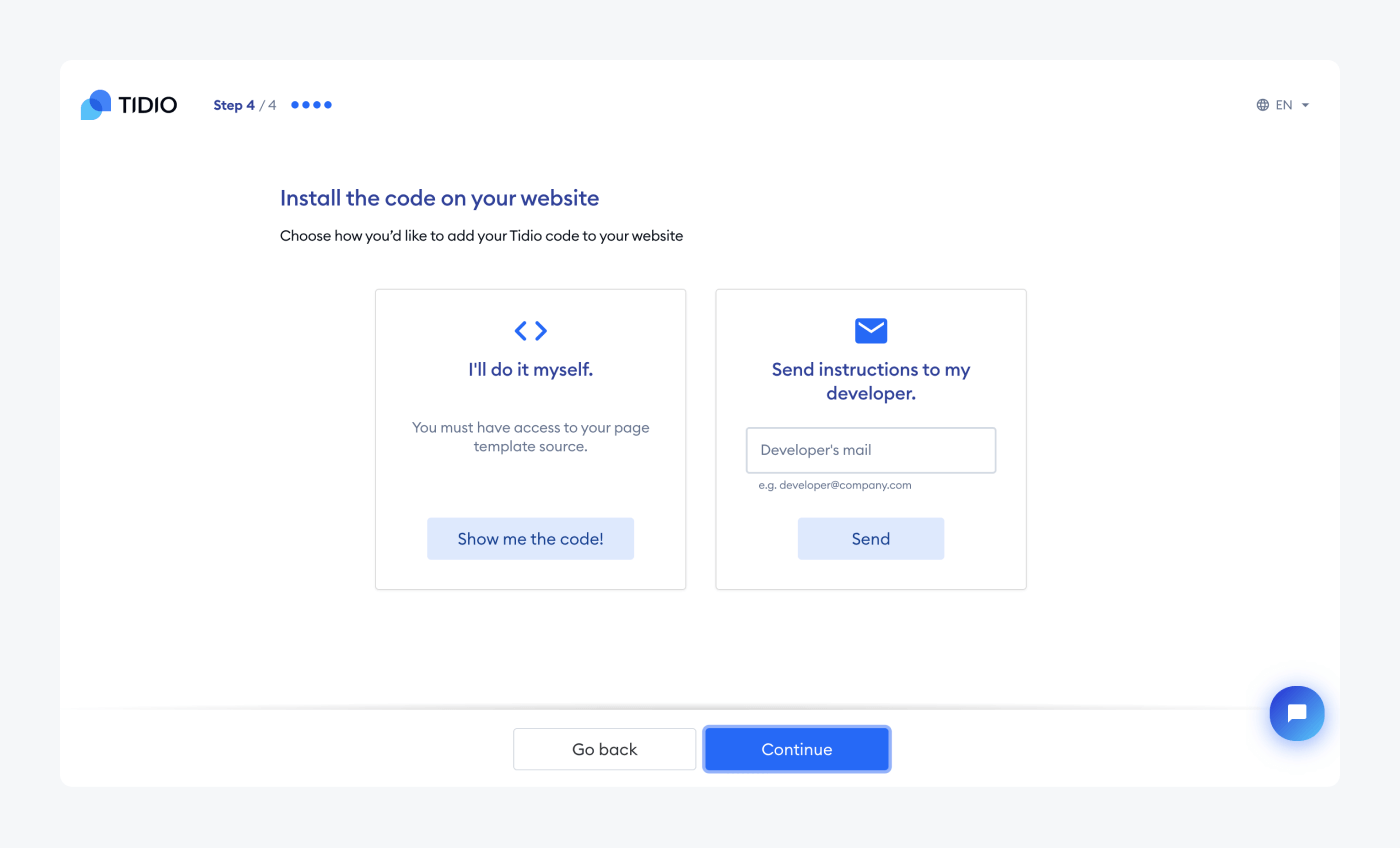
Step 2: Prepare the AI bot conversation flows
Try to identify the key areas where your visitors need help. It may be helpful to extract popular phrases from prior human-to-human interactions. If you don’t have any chat transcripts or data, you can use Tidio’s ready-made chatbot templates.
You can also use the FAQ scraper. This tool is a part of intelligent chatbots that goes through your knowledge base and FAQ pages. It gathers the question-answer pairs from your site and then creates chatbots from them automatically.
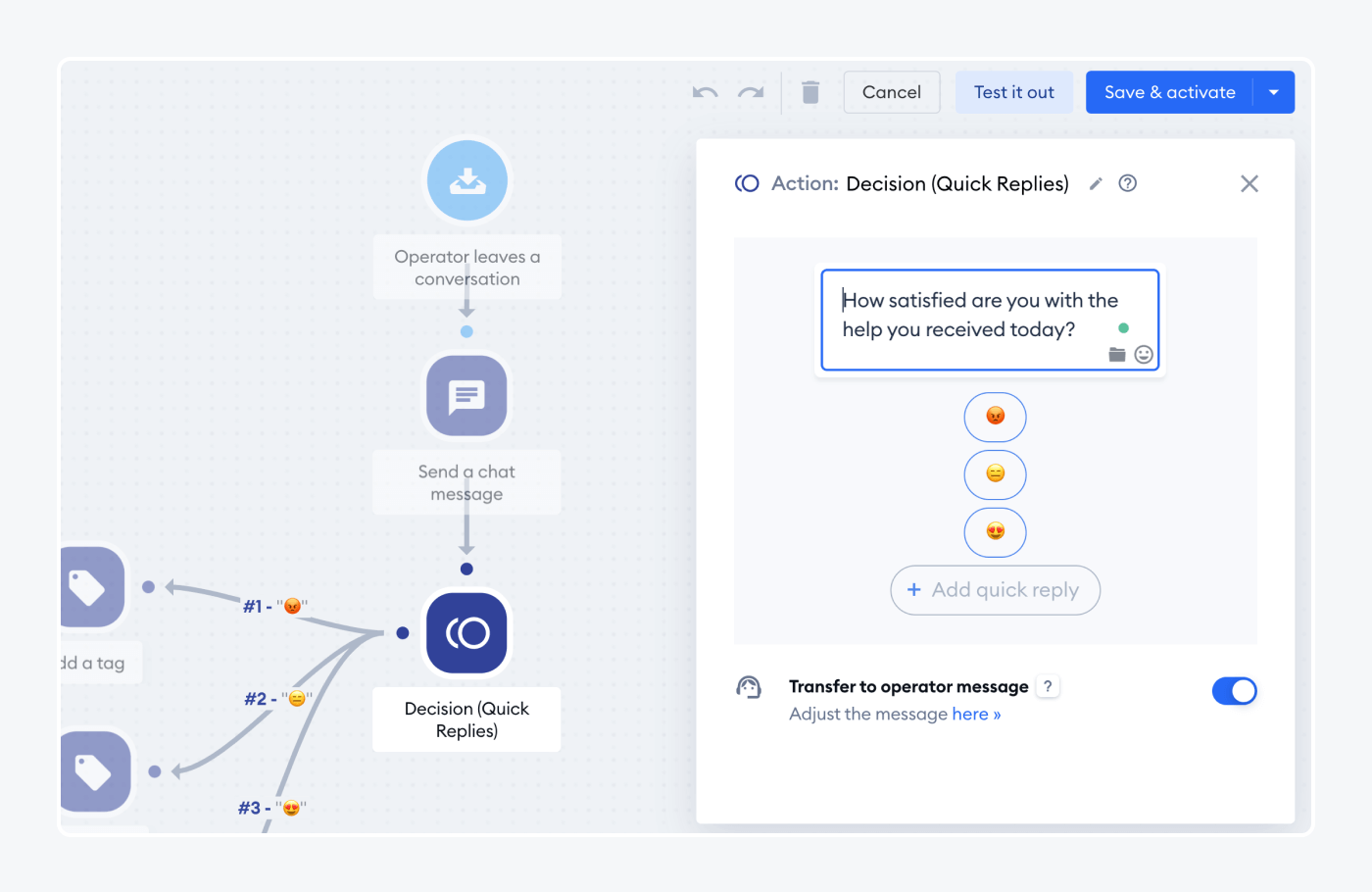
Step 3: Train the AI bot
After you’ve prepared the conversation flows, it’s time to train your chatbot to understand human language and different user inquiries. You can do this by adding training data based on real customer queries. Go to the Visitor Says node that triggers each of the chatbot flows. Choose one of the intents based on our pre-trained deep learning models or create your new custom intent. To do this, just copy and paste several variants of a similar customer request.
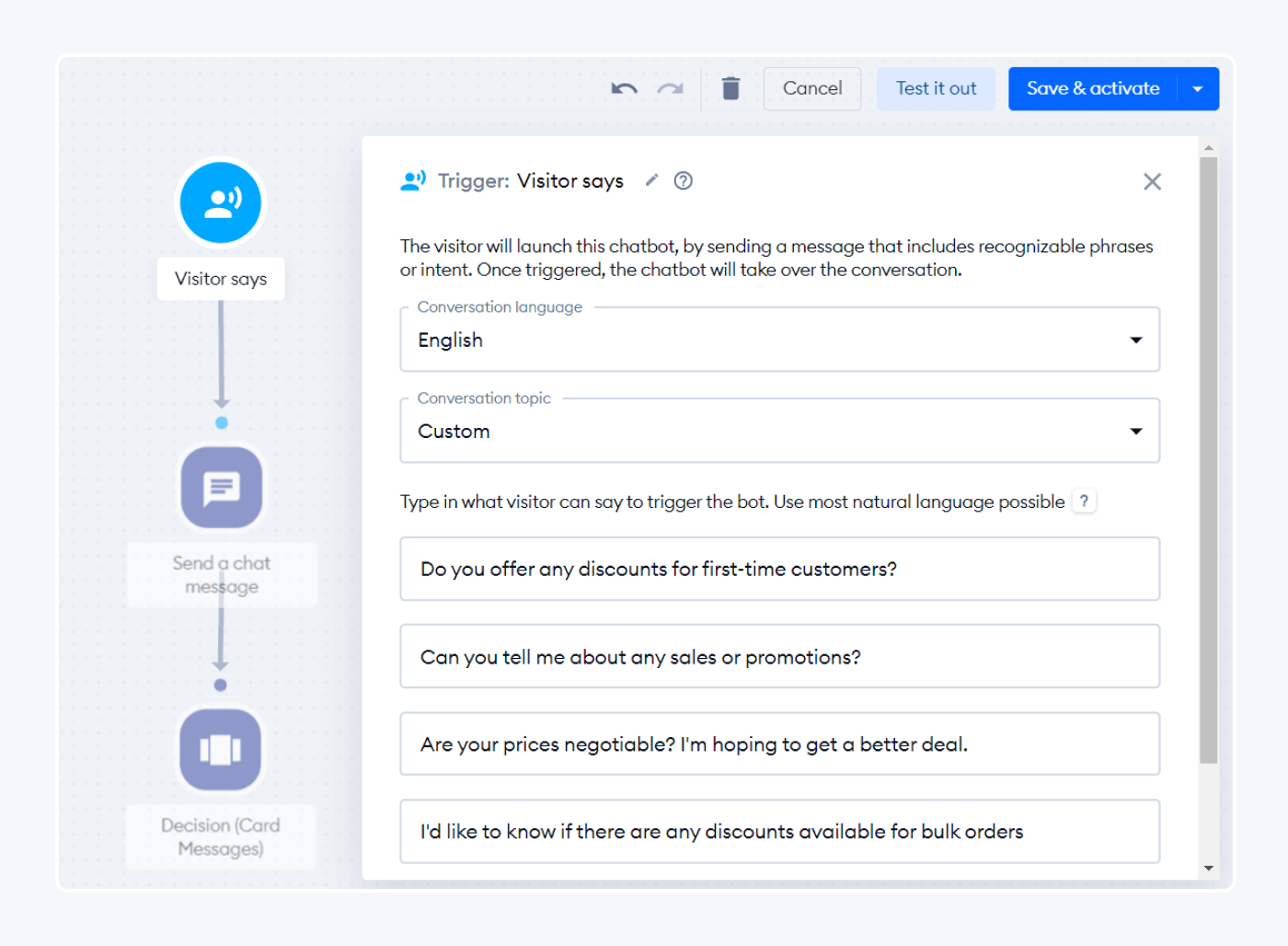
You can also use Lyro which trains itself when you switch it on. This software goes through your website, finds FAQs, and learns from them to answer future customer questions accurately.
Check out this video tutorial on how to set up a conversational AI chatbot, Lyro:
Read more: Check out how Tidio’s support team achieved 87% success rate on automation using Lyro.
Step 4: Monitor and improve
Now that your AI virtual agent is up and running, it’s time to monitor its performance. Check the bot analytics regularly to see how many conversations it handled, what kinds of requests it couldn’t answer, and what were the customer satisfaction ratings. You can also use this data to further fine-tune your chatbot by changing its messages or adding new intents.
That’s it! You’ve now created and deployed your first chatbot using Tidio. Remember to keep improving it over time to ensure the best customer experience on your website.
Read more: Check out this complete guide for beginners on how to create a Tidio chatbot.
Chatbots vs. conversational AI: key takeaway
The difference between conversational AI and chatbots can sometimes be very subtle. Generally, a chatbot focuses on automating specific tasks. Conversational AI is a broader term and usually, it focuses on simulating human conversations in a more advanced way.
However, both chatbots and conversational AI can use NLP and find their application in customer support, lead generation, ecommerce, and many other fields.
You can create bots powered by AI technology and NLP with chatbot providers such as Tidio. This platform makes it easy to set up and train your chatbot. You can even use its visual flow builder to design complex conversation scenarios.
Do you think you are ready to start building your own conversational AI agent? You can give it a go with our free trial—no credit card required!
Launch conversational AI for your business in minutes
FAQ
Some common examples of conversational AI include chatbots, virtual assistants, and customer service robots. The goal of most conversational AI systems is to mimic human conversation as closely as possible, often through the use of machine learning (ML) algorithms. For instance, virtual assistants, such as Amazon’s Alexa or Apple’s Siri, are designed to answer users’ questions in a conversational manner.
Commercial conversational AI solutions allow you to deliver conversational experiences to your users and customer. You can also use conversational AI platforms to automate customer service or sales tasks, reducing the need for human employees. It can be integrated with a bot or a physical device to provide a more natural way for customers to interact with companies.
There are too many factors to name a single number. Some conversational AI engines come with open-source community editions that are completely free. Other companies charge per API call, while still others offer subscription-based models. The cost of building a chatbot and maintaining a custom conversational AI solution will depend on the size and complexity of the project. However, it’s safe to say that the costs can range from very little to hundreds of thousands of dollars.
